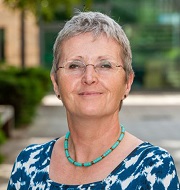Staffing in hospital A&E departments will come under the microscope as part of a new study by health academics.
As part of the study, funded by the National Institute for Health Research (NIHR), health experts from Kingston University and St George’s at the University of London will investigate the role non-medical practitioners play in NHS hospital emergency departments and urgent treatment centres to determine the best ‘skill mix’ – the ratio of non-medical practitioners to doctors and nurses.
Led by Dr Mary Halter and Professor Vari Drennan MBE, the 30-month study comes as the NHS is experiencing significant workforce shortages, including doctors in emergency services.
One of several solutions is to employ non-medical practitioners, also known as advanced practitioners, who are qualified staff from a variety of healthcare professions, to undertake some of the work usually carried out by doctors.
Attendance at emergency departments and urgent treatment centres is rising fast, and that is not just down to COVID
In the emergency department they might include emergency or advanced nurse practitioners, advanced clinical practitioners, physician associates and pharmacists, as well as emergency, paramedic, and physiotherapy practitioners.
The research will feature three phases and involve the analysis of national data and observing non-medical practitioners while they work, as well as detailed case studies of patient experience and outcomes in emergency departments with different skill mixes.

Professor Vari Drennan MBE
Increasing numbers of NHS emergency departments in England are employing non-medical practitioners, but Dr Halter, who has investigated patient outcomes and experience in a range of emergency, urgent care and primary care settings, said there is little firm evidence of the impact of this.
He adds: “There’s a lot of pressure on the system in terms of workload.
“Attendance at emergency departments and urgent treatment centres is rising fast, and that is not just down to COVID.
“Hospital trusts must understand the best way of meeting that demand and, while changing staffing is one element, at the moment there is limited evidence as to the best way to do that to ensure safe, efficient care of all the different types of patients attending emergency departments and urgent treatment centres.”
We want to work out the optimal balance of those different groups of people working in the emergency department for the best effect for the patient
Professor Drennan, who demonstrated in a recent study that the physician associate role had proven to be a valuable asset to the NHS, said the team will also examine data around the number of patients returning to an emergency department within seven days of being discharged from each NHS trust to see what impact different skill mixes may have on patient care.
“We want to work out the optimal balance of those different groups of people working in the emergency department for the best effect for the patient.
“This includes the speed and safety of treatment, and how good their experience was,” she adds.
Dr Halter and Professor Drennan will be supported by patient representatives, health professionals, and academics from the University of Surrey, Royal Holloway the University of London, St George’s University Hospitals NHS Foundation Trust, and Surrey and Sussex Healthcare NHS Trust.




